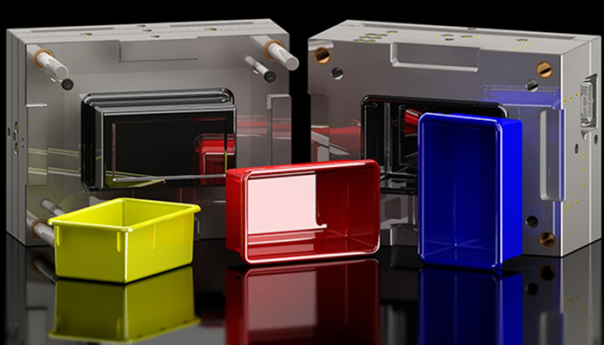Manufacturing Essential Components: Industrial Molding Parts
Manufacturing essential components for various industries often involves a wide range of processes and techniques. One crucial aspect of this process is the production of industrial molding parts. These parts are integral components of many manufactured goods, including automobiles, electronics, and medical devices.
Industrial molding, also known as injection molding, is a manufacturing process that involves the use of specialized machines to produce parts by injecting molten material into a mold. This process is widely used across various industries because it can produce complex shapes and designs with high precision and accuracy.
The first step in the industrial molding process is to create a mold. This involves designing a model using computer-aided design (CAD) software and then creating a physical mold using a variety of techniques, including 3D printing, CNC machining, or manual machining. The mold is typically made from steel or aluminum and is designed to withstand high pressure and temperatures.
Once the mold is ready, the actual molding process begins. The mold is placed into an injection molding machine, and the molten material is injected into the mold at high pressure. The material is then allowed to cool and solidify, and the mold is opened to reveal the finished part.
There are several advantages to using industrial molding for the production of essential components. First, it is a highly efficient process that can produce large quantities of parts quickly and at a low cost. This makes it an ideal choice for mass production. Additionally, industrial molding can produce parts with high accuracy and consistency, ensuring that each part meets precise specifications.
Industrial molding is used to produce a wide variety of components, including gears, housings, brackets, and connectors. These parts are used in a range of industries, including automotive, aerospace, electronics, and medical devices.
In the automotive industry, for example, industrial molding is used to produce a range of components such as dashboards, bumpers, and headlights. In the electronics industry, it is used to produce parts for smartphones, laptops, and tablets. In the medical industry, industrial molding is used to produce components for medical devices, such as syringes, tubing, and connectors.
One of the challenges of industrial molding is the need to choose the right material for the specific application. There are many different materials available, each with its own unique properties and characteristics. Some of the most common materials used in industrial molding include plastics, metals, and ceramics.
Plastics are the most commonly used material in industrial molding because they are lightweight, durable, and easy to mold. They are also available in a wide range of colors and can be formulated to meet specific requirements such as high heat resistance or chemical resistance.

Metals are also used in industrial molding, particularly for parts that require high strength or conductivity. Common metals used in industrial molding include aluminum, brass, and steel.
Ceramics are another material used in industrial molding, particularly for parts that require high levels of wear resistance or thermal stability. Ceramics can be challenging to mold due to their brittleness, but they offer unique properties that are difficult to replicate with other materials.
In conclusion, industrial molding is a critical process for the production of essential components in various industries. It is a highly efficient process that can produce large quantities of parts quickly and at a low cost. It is also a reliable process that can produce parts with high accuracy and consistency. With the right materials and techniques, industrial molding can be used to produce a wide range of complex components that are essential to many industries.
முந்தைய:Injection Mold Components: What You Need to Know
அடுத்தது: Creating High-Quality Electronics Mold for Enhanced Product Performance
-
Understanding the Costs of Injection Molds
2023-11-17
Injection molding is a highly efficient and widely used manufacturing process for producing plastic parts. It involves i...
விபரங்களை பார் -
How are precision moulds made?
2024-12-3
In the vast field of manufacturing, precision moulds play a vital role. Not only are they key tools in the production of...
விபரங்களை பார் -
Molding Parts: Precision Engineering for Proven Performance
2023-7-13
In the world of manufacturing, precision engineering plays a crucial role in ensuring the performance and reliability of...
விபரங்களை பார் -
Exploring the World of Industrial Mold: Techniques, Applications, and Innovations
2023-6-11
The world of industrial mold is vast and ever-evolving. It encompasses a wide range of techniques and applications, all ...
விபரங்களை பார் -
Injection Molding Parts: Key Components for Precision Manufacturing
2023-4-24
Injection molding is a manufacturing process that involves the production of parts by injecting molten plastic into a mo...
விபரங்களை பார் -
Creating High-Quality Automotive Molds for Optimal Performance
2023-4-15
Creating high-quality automotive molds is an essential aspect of the manufacturing process for the automotive industry. ...
விபரங்களை பார்







